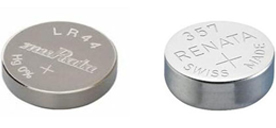CR123A vs RCR123A: Key Differences and Buyer's Guide
2024/6/19 11:54:24
Views:
In modern electronic devices, selecting the right type of battery is essential for optimal performance and durability. The CR123A 3.0 V lithium battery and the RCR123A rechargeable battery, often discussed together due to their similar size and shape, exhibit significant differences in application, specifications, main differences, and packaging. The goal of this article is to thoroughly examine these variations in order to assist customers in making wise decisions.
Reviews of the Top 5 Extended-Life Cr123A Batteries for 2023
Description of CR123A versus RCR123A
- CR123A: This battery is a disposable lithium manganese dioxide battery offering high energy density and a long shelf life (typically 5 to 10 years), making it ideal for emergency or infrequently used devices. It performs well under extreme temperatures, operating between -40°C and +60°C.
- RCR123A: Also known as the 16340 battery, this is a rechargeable lithium-ion battery that can be charged approximately 300 to 500 times. Though it has a lower capacity, its rechargeability makes it ideal for devices used frequently, such as digital cameras and some high-use flashlights.
CR123A VS RCR123A Applications
- CR123A:- Security and surveillance equipment, such as smoke detectors and security cameras
- Medical devices, including defibrillators and other emergency medical equipment
- Professional-grade cameras and photographic equipment
- High-performance flashlights and other outdoor gear
- RCR123A:
- Consumer digital cameras
- Rechargeable flashlights
- Everyday personal electronic devices
- Certain specific remote-controlled toys
Specifications of CR123A vs RCR123A
- Voltage: The CR123A 3.0 V battery provides a stable 3.0 volts until depleted, while the RCR123A starts at 4.2 volts (when fully charged), stabilizing at 3.7 volts during use but can drop below 3.0 volts when low.
- Capacity: CR123A typically has a capacity between 1500mAh and 2000mAh, whereas RCR123A typically ranges from 650mAh to 1000mAh, reflecting its higher energy density and reuse capability.
- Weight and Size: Both are nearly identical in size, but weights may differ slightly due to different materials and construction.
Major Distinctions Between CR123A and RCR123A
- Performance: CR123A generally provides higher peak power, suitable for devices with high current requirements. RCR123A is ideal in situations with lower current demands but frequent use.
- Safety: Lithium-ion batteries (RCR123A) require built-in protection circuits to prevent overcharging and deep discharging, whereas disposable lithium batteries (CR123A) are designed with stable chemicals and sealed construction to safely release their stored energy.
Package CR123A against RCR123A
The casings for both battery types are usually made of robust metal materials to protect the internal chemicals from environmental factors. CR123A is typically marked as non-rechargeable, often in darker colors, whereas RCR123A may feature brighter colors and clear rechargeable markings.
CR123A Package VS RCR123A Package
Conclusion of CR123A vs RCR123A
Although CR123A and RCR123A are physically compatible in size, their differences in voltage and power output, as well as charging capabilities, mean they are not simply interchangeable. Making the right battery choice is essential to guaranteeing the effectiveness and safety of the gadget. Checking the device manual and following the manufacturer's recommendations before using non-original batteries is key to preventing device damage and ensuring safety.
Additional Content for CR123A vs RCR123A Batteries
To enhance the discussion on CR123A versus RCR123A batteries, we could delve deeper into the aspects of environmental impact, cost-effectiveness, and recommendations for specific brands and models. Adding these dimensions will provide a more comprehensive view for consumers considering which battery type to choose for their devices.
1. Environmental Impact
Disposable CR123A 3.0 V batteries pose significant environmental concerns. The chemicals and metals used in these batteries, such as lithium and manganese, can be harmful if not disposed of properly. These batteries add to the rising problem of technological waste in the environment because they are made for single use.The RCR123A batteries, being rechargeable, typically have a smaller environmental footprint. By recharging and reusing the same battery multiple times, the overall number of batteries produced, used, and disposed of is significantly reduced. However, the environmental benefit depends on using these batteries to their full lifespan and disposing of them properly at end-of-life.
2. Cost-Effectiveness
From a cost perspective, CR123A batteries may initially seem cheaper due to their lower price per unit. However, over the long term, they may prove more costly because they need to be replaced more frequently than their rechargeable counterparts.Over time, RCR123A batteries can prove to be more cost-effective, despite their initial higher cost. The ability to recharge these batteries hundreds of times can offset the higher initial cost, especially for devices that consume batteries quickly. It is important for consumers to consider their specific usage patterns to determine which battery type offers the better cost-benefit ratio.
3. Recommendations for Brands and Models
When choosing between CR123A and RCR123A batteries, considering reputable brands that offer reliable performance and safety features is crucial. Here are some recommendations:
- Panasonic and Duracell are well-known for producing high-quality CR123A batteries, offering reliable performance and long shelf-life, suitable for critical and emergency devices.
- Nitecore, Olight, and Fenix offer some of the best RCR123A batteries, known for their high capacity, stability, and built-in safety features that prevent overcharging and excessive discharge.
Consumers should also look for batteries that come with certifications from recognized testing organizations, such as UL or CE, to ensure they meet safety and performance standards.
4. Conclusion
Adding considerations of environmental impact, cost-effectiveness, and recommendations for specific brands enhances the understanding of CR123A versus RCR123A batteries. By considering these factors, consumers can make more informed decisions based on their specific needs, usage habits, and values, particularly regarding sustainability and long-term costs.Related Information
-
-
Phone
+86 135 3401 3447 -
Whatsapp






